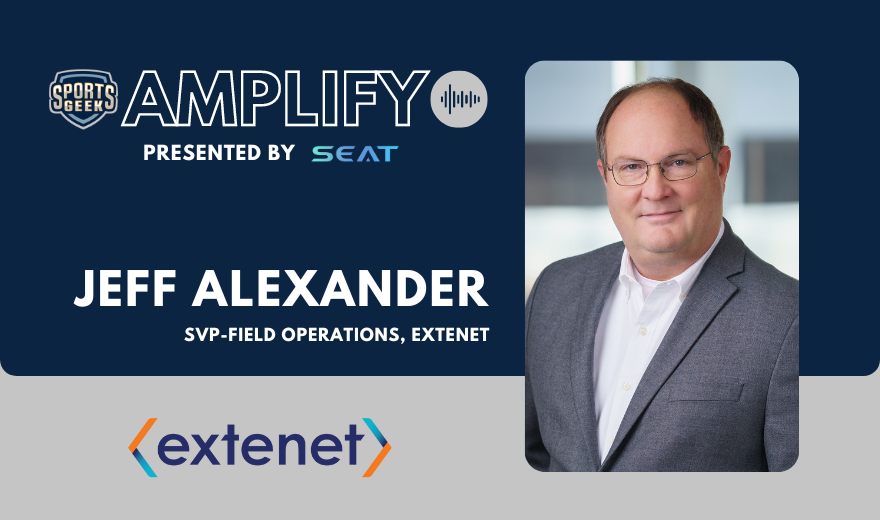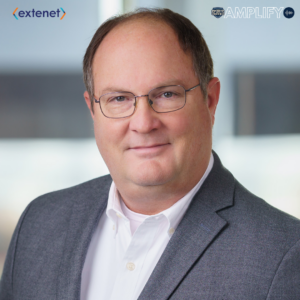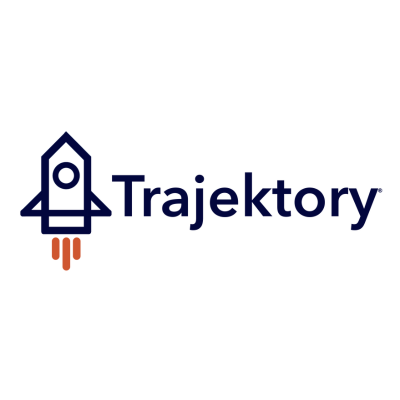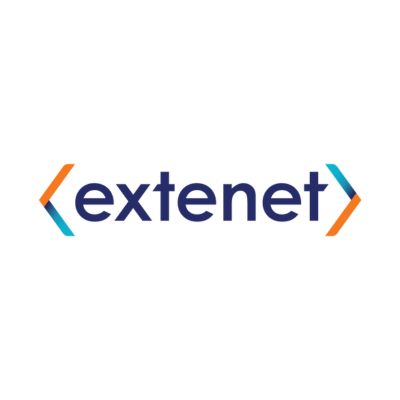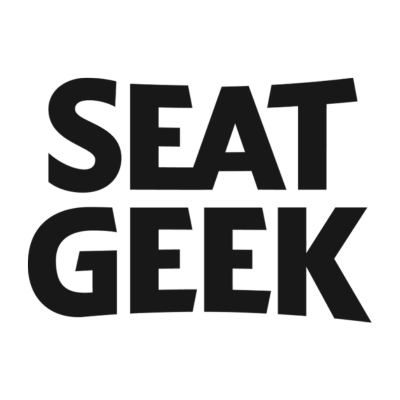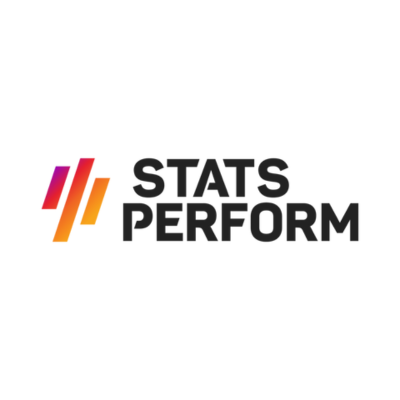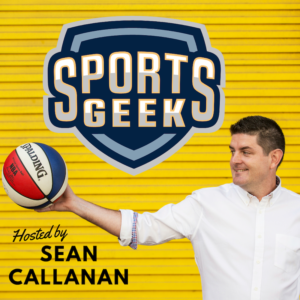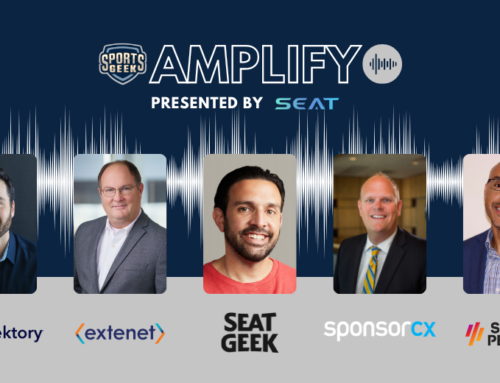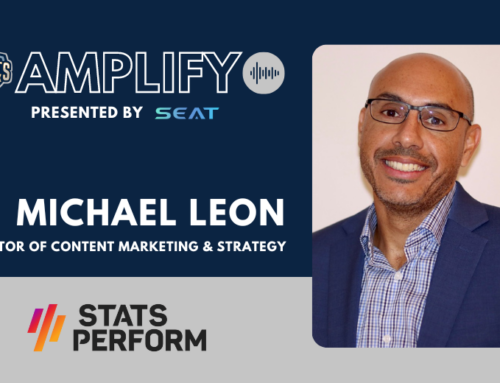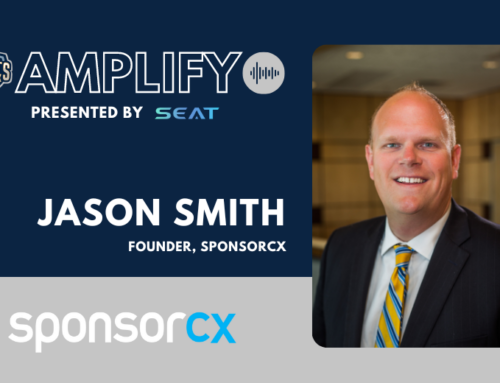Extenet provides private wireless networks and other technology solutions to address venue challenges, making it easier to deploy and maintain technology solutions and providing a more comfortable and enjoyable experience for fans.
Learn how Externet helps venues deliver the best experience across sports and entertainment venues.
In this Sports Geek Amplify episode, Jeff Alexander from Extenet shares insights from new and existing venues on how private wireless networks open up options to deliver more technology solutions in your venue.
What you'll learn from Jeff Alexander
The private wireless network becomes more and more profitable or appealing when you start talking about those kinds of things and you can leverage the private wireless from a cost perspective
Please be kind. Transcribed by bots may contain some errors.
Sean Callanan (00:01.497) Welcome to the Sports Geek Amplify series presented by SEAT. SEAT will be in Salt Lake City July 14-15, 2023. Register at www.seatconference.com. This episode will feature Exetenet. Very happy to welcome Jeff Alexander. He's the Senior Vice President of Field Operators at Exetenet. Jeff, welcome to the podcast.
Jeff Alexander (00:19.674) Thank you.
Jeff Alexander (00:22.262) Thanks Sean, glad to be here.
Sean Callanan (00:24.981) First of all, I want to get a bit of background on yourself and also the origin story of Externet. You've been in the industry for over 30 years across Telco, been with Externet since 2016. You would have seen a lot of changes in the sports stadium scene and the entertainment venues seen in that time. Do you want to let people know who might not know about Externet, where Externet got its start and how the business has evolved over the past decade or so?
Jeff Alexander (00:54.03) Sure, Sean. So Xtent got their start primarily as an outdoor.
Jeff Alexander (00:58.754) DAS company back many, many years ago when DAS was really the only way to provide targeted outdoor coverage. We leveraged our relationships, our knowledge, and actually we were very successful with the outdoor DAS business. That quickly transitioned to small cells on the outside and then DAS moved as the primary solution for coverage and capacity on indoor venues.
Jeff Alexander (01:28.748) needs capacity and coverage more than sports venues.
Sean Callanan (01:33.353) And so you would have gone through that phase. And I remember my early days of C's, those conversations around how do we get dads into a stadium? How do we, where do we put all the points? And it was also around that ad, that time around the advent, you know, of, and the revelation of, of, of the iPhone and the fact that the mobile was starting to be a device that is our primary device, but then also the requirements, you know, from mobile carriers and then, you know, the concentration of fans in a stadium.
Sean Callanan (02:01.569) the strain that was happening on stadium. So that was that initial piece of getting Daz in there and then making sure that fan experience was up to their expectation, you know, as they were everywhere else in the world.
Jeff Alexander (02:15.438) Sure, as a matter of fact, we were involved in one of the largest DAS deployments at the time here locally in Dallas. And when we started the program, you actually used your cell phone to make a phone call.
Jeff Alexander (02:32.05) and nobody really did anything else. Maybe a little bit of text messages, maybe some short stuff, but that was it. By the time we got done, the iPhone had been released and everything changed. And I mean everything. The telephone or the cell phone became less of a phone and more of a device that you use to interact with what's going on in the stadium or arena and it is not stopped. It's such a pent-up demand now. It's just crazy.
Sean Callanan (03:02.349) And so from an ex-debt point of view, moving on from DAS, you're looking at that full suite of products to provide service for both from a customer and the fan facing point of view. So the fans that are pulling out their phone and taking a selfie or sharing a TikTok or showing a highlight, you need to be able to give them the infrastructure, whether it be via DAS or Wi-Fi networks that are inside the stadium to make sure that the customer's here. It's great, but then also…
Sean Callanan (03:30.969) On the other side, you've got all this tech that's now, you know, both being wired and wireless that needs to be part of the solution. So is that pretty much where your, you know, your wheelhouse is and from an ex net point of view is providing that total solution and looking for the different options to plug and play to provide that solution for customers in their team and venue side.
Jeff Alexander (03:54.126) Sure, so Sean, what happened is, is the DAS networks in the venues got bigger and the customers became more and more engaged with their devices. It became apparent that the things that the venue itself were relying on to provide back of house.
Jeff Alexander (04:11.562) you know, support, technology, sales, point of sale terminals, things, security, things like that, became, they became hindered because of the demand that the public was putting on the network. So the venues, you know, they searched long and hard. There was a, you know, a big push for Wi-Fi there for a while that would support the back of house networks and the, or the back of house demand and point of sale, stuff like that.
Jeff Alexander (04:41.456) is more and more demand was put on the network. They figured out that Wi-Fi just wasn't really the answer. So one of Externet's key things was this new CBRS, or private wireless technology, that came out. And we've been very successful with leveraging that to offload some of that back of house traffic or need away from the public-facing network.
Jeff Alexander (05:11.536) things. It's improved the fan experience in two ways. One, the point of sale stuff works much better, ticket-taking works much better, and we're not using that capacity or taking it away from the fan so they actually get a better experience with their wireless device.
Sean Callanan (05:31.917) And so, you know, we've discussed previously, and I'd love to talk about it now, what the SPURS have done at the AT&T Center, because a lot of the solutions you've worked on have been with existing stadiums, because they're reaching that capacity point of where their technology is at capacity. And so rolling out that private wireless network was enabled them to, like you said, free up that bandwidth to be able to roll out new tech.
Sean Callanan (05:59.472) and provide a technology refresh at AT&T Center.
Jeff Alexander (06:06.025) So AT&T Center is a perfect example of.
Jeff Alexander (06:08.518) of a stadium or an arena that had had a network in place for many, many years. It had done very, very well. It served the purpose. But it was getting older and as the demand increased, the technology folks at the arena realized they had to do something. So as a refresh, we went in and installed a higher capacity network for DAS as well as a private network for the arena.
Jeff Alexander (06:38.432) back of house and they've leveraged it exactly the right way with ticket taking, with point of sale, with security, things of that nature and it's now seamless for them. What it means is they don't have to run wires all over the place, it's sped the deployment of critical things for events that you need to support the event, all the while not impacting anything to do with the public.
Jeff Alexander (07:08.472) They are a perfect example of leveraging the technology to meet the needs while improving the customer experience.
Sean Callanan (07:17.609) And did that trigger come from the team at the Spurs looking at a technology refresh, or was it part of more back of house technology, like you said, point of sales or ticketing innovation? So they're looking at another solution and realizing that they didn't have the bandwidth or they didn't have the networks available, and that's sort of what triggered the conversation.
Jeff Alexander (07:40.45) So what started it was they knew they needed to do something to increase the public-facing experience. You know, the DAS they had just wouldn't support the traffic that they needed. And as a part of that conversation, the XTEN engineering team got together with the arenas technical and engineering teams. And they, you know,
Jeff Alexander (08:05.838) The need presented itself and then we simply recommended private wireless network. The folks at the arena, they knew about it, they had heard about it, of course, it's been all over the media, but they really not understood what it meant and what it could do for them. So with some trials and some site visits and things like that, we were able to demonstrate
Jeff Alexander (08:35.792) what it did and how it works. And it was a very simple solution, or very simple decision for them that that's the way they needed to go because it kept everything private that needed to be private and everything public that needed to be public.
Sean Callanan (08:54.565) And so from when you're talking to teams and venues, who are your primary customers? Who are the people that should be listening to this podcast because they're the ones that are looking to roll out potentially new technology and making sure that their network is sufficient and can deliver for what they wanna do? Yeah, who are some of your key people that you work with on a regular basis?
Jeff Alexander (09:22.55) So down at the Spurs, it's Win-Win, who is in charge of their technology department.
Jeff Alexander (09:31.314) People like Matt Messick over at the Dallas Cowboys. Typically the CIO organization or the technical organization. Once in a while it's the facilities folks, but not very often. It's primarily the technology folks that are engaged in this and want to explore the options and see what's new and how it can be leveraged to improve the experience of the visitors.
Sean Callanan (09:56.913) So with customers like Win and Matt, like one of the drivers for XNet is putting customers first. What does that mean? It's great to have those sort of mottos in a branding document or in a boardroom, but what does it mean to you when you are working customers? What does putting customers first mean?
Jeff Alexander (10:21.314) So it's pretty simple.
Jeff Alexander (10:23.094) We've been in the sports business here at Xnet for over 10 years. It's more like 12 or 14 years. So we understand what it means to run an arena or a stadium. We're involved with them. We actually become a pseudo member of their team, over their staff, and help them through technology decisions today and in the future. We bring a lot to the table when it comes to these
Jeff Alexander (10:53.008) types of things. We do work with the mobile network operators a lot. We understand what they need and how they like to do things and we're able to translate that into the technical speak or the business points that the arenas and stadiums like to hear or understand. So it's a pretty good match. So customers first means we make their problems our problems and then help to solve them.
Sean Callanan (11:20.789) And, you know, one of the tough things around venues is their capacity, you know, and they're always looking to maximise their revenue. So how do you, you know, to roll out a project like a refresh at AT&T Centre, how do you get that done when, you know, they've got 41 Spurs games, they've got concerts coming in, you know, they've been in Texas, probably got a rodeo or those kind of things coming into town and how do you…
Sean Callanan (11:49.425) you know, roll out a project because you don't get the, you don't get the downtime that you might in, you know, in a real estate setting or something. How does it happen in the world of sports?
Jeff Alexander (12:01.506) So, carefully, quite frankly.
Jeff Alexander (12:07.046) It's a whole lot of interaction between the facilities folks and the technology folks at the venue, along with coordination with the mobile network operators to understand what needs to be done and when. It is not unusual in a busy arena or stadium where we work in the middle of the night or on weekends, holidays, things like that to accomplish the network builds.
Jeff Alexander (12:35.32) or the refreshes or the optimization and things like that that need to happen. So it's not a 9 to 5 job by any means. And an arena job is not 9 to 5 either. As you've pointed out, you know, basketball games, concerts, rodeos, and you name it, and you have to work around all of those things. At the same time, you can't impact the current service while you're improving it.
Jeff Alexander (13:05.08) simultaneously and coordinating between the two with all the parties involved. It's truly a balancing act.
Sean Callanan (13:14.137) And what's the variety like and what's some of the new unique challenges that sports stadiums present to you as a network engineer and looking for that solution? Like even from the different designs of stadiums, you've got the outdoor challenges of a big baseball ballpark and what that offers to the close confines of a hockey or a basketball arena. And then the large scale that would be AT&T Stadium with the Cowboys and…
Sean Callanan (13:43.217) their masses of people and all the different zones you might have. It must be both a challenge but also a joy to be having all of these different problems and different use cases coming at you on a regular basis.
Jeff Alexander (13:58.194) I think the engineers would probably.
Jeff Alexander (14:00.994) take issue with that statement, but I agree with you. Every single stadium is an individual case basis. None of them, there are not two that are the same anywhere on the planet. So every one's a brand new challenge. Yes, you can take lessons learned from other venues and use them in the future venues, of course. But when it comes down to operating within the venue, no venue has operated the same. Even if they're owned by the same companies, they're not operated the same.
Jeff Alexander (14:30.928) learning the operation, learning what the pain points are, and then solving for the pain points. And that's scheduling, that's technology that you use, the type of antennas, the color of the coax actually would matter. We did a stadium in Louisville, Kentucky, and the type of coax, the color of the coax, could only be a certain color because their arch rival was another color. So you have to be very, very careful with that. So everyone's different.
Sean Callanan (14:57.372) Yep.
Jeff Alexander (15:04.278) It's challenging and that's what makes it fun.
Sean Callanan (15:07.117) And it is, you know, there is those things, whether they be superstition or rival, but then there's also the aesthetic of, you know, where can you place them so they're functional, but also not visible. You must be getting good at hiding antennas and placing tech in weird places. Have you had any places where you got, are you one of those people that goes to a stadium and…
Sean Callanan (15:33.065) tries to find all the tech. It's sort of like a tech version of Waze Wally to see how the implementation has happened.
Jeff Alexander (15:39.342) Sean, you hit the nail on the head. I misspoke earlier. There is one thing that's common among all stadiums, venues, arenas, nobody wants to see the antennas. Nobody wants an ugly mess in their ceiling or in front of the fans. So that is one very common thing among all the venues. And yes, I do. Everywhere I go, I look for antennas to see how they did it, if I can see them, if I can't see them,
Jeff Alexander (16:09.336) works, my wife doesn't like that.
Sean Callanan (16:12.537) Yeah, but that's also why we attend conferences like SEAT to get the technology folk, the geeks together to compare notes around the latest place where you have hidden an antenna, how well it's worked, the stories of where can you get coax that color because you need it for a project. So yeah, I always find that one interesting of one.
Sean Callanan (16:40.145) the stadium design, but then also getting around, you know, the architecture, like, and, you know, where can you get cables through? You know, there might be a big concrete pile on, what do you get around it? So ingenuity and thinking out of the box and looking for creative ideas is something that, you know, I guess early on, you know, network engineers were applying networks to stadiums that were built.
Sean Callanan (17:06.309) How do you think that's changing now? You're starting to see stadiums building knowing that that network requirements going to be there with these newer stadiums coming in here. So seeing that that, I guess the requirements and the needs from a network point of view start being included in these new stadium builds.
Jeff Alexander (17:24.301) Sean, they have. Just over the last few years, there's not a stadium being built that has been built.
Jeff Alexander (17:30.922) recently that hasn't taken into account technology and the wireless part of that technology is a big part. There's a new venue being built right now or it's about to be finished in Las Vegas where they actually built pathways for coax and other cabling and antenna holes or mounts in the precast concrete. So things are getting interesting when it comes to that and the people who build these
Jeff Alexander (18:01.476) they understand that and they you know it's it's better that way it does make it easier in a lot of cases if it's the earlier the better is what we always say never too early to start
Sean Callanan (18:15.813) But we all do know that the future is going to be more demand, more capacity, the devices are going to keep getting upgraded. We've seen even just in the last five years, more video being taken and consumed and shared in venue. And so that puts it on a new load and that's not going to go away. We're just going to have more people doing it and expect that it's going to be required.
Jeff Alexander (18:44.738) Sean, the people that the sports teams are targeting today, they don't go to these events to spectate, they go to participate and they participate with their wireless device. It's going to be front and center in the landscape for years to come.
Sean Callanan (18:45.155) Um.
Sean Callanan (19:05.273) And so when you're working with clients, whether you've gone through a refresh or you're a partner, is there something that triggers either a current client to call you up and say, hey Jeff, we need to look at what we're doing and we wanna look for optimization? Or they might not be a client, they might be saying, hey, we need to look at what we're doing. Is there something that normally triggers that conversation to say, hey, we wanna look at a refresh of what we're doing from a networking point of view?
Jeff Alexander (19:35.55) Yeah, primarily it's two things. One, they're either doing a major architectural renovation on the building or building a new building, or they are going through a technology refresh, an incomplete technology refresh of the building and realize that the current network that they have is just not sufficient for where they want to be in the future. So it's generally one of those two.
Sean Callanan (19:59.837) Terrific, one of the things I do when I'm looking at technology solutions for the world of sport is apply the triple threat. And I wanted to ask you now, looking at that, the first one is time. We know that the staff working at a team or a venue, you know, are time poor, they're stretched in servicing and, you know, spend a lot of time really on, hey, this is the next event. Let's make sure each event is successful. How does some of the solutions?
Sean Callanan (20:29.429) and maybe also the private wireless network solution in particular, how does that help save time for staff like Matt and Wynne that are at the coal face, you know, keeping an eye on all things from a technology point of view?
Jeff Alexander (20:43.522) So one thing, it provides comfort. When a good solid network, both public facing and private, are in place, it provides comfort. They know that they can depend on it. They have it as a resource. And they're just not going to have to worry about it. So they can go worry about other things that maybe aren't in control like the wireless networks are. You mentioned earlier, we put customer first.
Jeff Alexander (21:13.476) engineer to be at a major event and support it locally. So if, you know, if on the rare chance there is something that goes wrong, somebody's right there. So it's all about the comfort. And that lets them focus on things that, that are, that they deem more important at that point. You know, as far as speed and things like that, the private wireless networks give them the opportunity to deploy things like
Jeff Alexander (21:44.456) If the point of sale terminals happen to be battery powered, and most of them are, they don't have to worry about anything. They just literally hand them to the associate that's going to use the device, turn it on, and off they go. So it speeds up that sort of deployment. When you talk about security and things like that, if they're going to have a specific area where maybe they need a new camera, they don't have to run wires for the camera.
Jeff Alexander (22:13.356) just drop the camera there, put it on the private network, and off they go. Same thing with 2-way radio and things like that. If they have a big influx of security or ushers or concierges that they need, they can deploy communication devices very, very rapidly on this private network and never have to worry about what the public's doing. And that's the real benefit.
Sean Callanan (22:37.765) And I guess the thing is it gives you that opportunity to scale because all of those other use cases of, oh, we need more capacity here, it would be a decision of, oh, what am I unplugging? What can't I have? Because I've only got limited bandwidth. So, you know, that time of, you know, a big concert's coming to town and they have this big requirement around this specific tech, well, that would require them to be rolling out more cables or spinning something up. And that's where the big time saver kicks in, I would assume, like,
Sean Callanan (23:06.785) and you're getting out of that firefighting mode. Oh, this isn't working. Oh, why? Because we don't have the bandwidth. And so there would be a lot of time in that, you know, firefighting mode. If you can step back and not be firefighting all the time and you can just be monitoring things, I think that would be a terrific time saver.
Jeff Alexander (23:23.914) It is. Some of the talent that we get in the venues, the concerts and stuff, the stars, a lot of times they want their own Wi-Fi. Well, we can deploy Wi-Fi over private wireless also. So it just tremendously impacts the speed and improves the speed for deployment on anything to do with any type of technology, communications, anything like that. It's just
Jeff Alexander (23:54.589) It's a massive time saver once you have the network in place.
Sean Callanan (23:58.333) So the next thing on the Triple Thread is looking at money and looking at how you can help save or make money. And I mean, in this case, is it primarily around those efficiencies of, you know, those things that have been hard to, that either haven't been scoped, like a big concert coming in and wanting extra pieces, like those extra projects and those add-ons all the time, they would start adding up over time if you didn't have the infrastructure to be able to say,
Sean Callanan (24:25.057) Oh yes, we can provide that because we've got a private wireless network, we can add it on there without having to roll out new projects every time you get a slight change in scope.
Jeff Alexander (24:37.45) absolutely impacts the cost. It's tremendous, it's a tremendous cost saving. You know, we mentioned the time, it's a tremendous time saver. It's tremendous cost saver also. I mean, labor is not getting cheaper, it's getting more expensive. Materials are getting more expensive when you start trying to build infrastructure to support all these things.
Jeff Alexander (24:56.778) the wireless network becomes more and more profitable or appealing when you start talking about those kinds of things and you can leverage the private wireless from a cost perspective. You can leverage it for offload of certain types of traffic from the mobile network operator stuff. There are ways to do that and you don't see a lot of that right now but we absolutely believe that that's that's on the that's coming.
Sean Callanan (25:26.521) And then definitely you can start, you know, your team can start developing products that potentially might drive revenue. You talked about, you know, the big star, Taylor Swift comes to town, she wants her old crew wants WiFi, but there's also nothing stopping, you know, one of your big corporate partners that has their own suite that says, oh, we want our own WiFi. It's like, well, yeah, we can provide that to you and your suite just for your clients. And they have that, you know, they feel special, but it becomes something that can be a little.
Sean Callanan (25:53.629) just a little tweak that gets added on to what they offer their premium clients.
Jeff Alexander (25:59.598) Absolutely, when you start talking about the premium clients, it's the little things that make the big difference. The big things are pretty much already taken care of. Everybody knows what the big clients want to see, they know what they want to have, and it's the little things. And it's the speed to deliver those little things, and that's what the private wireless network provides.
Sean Callanan (26:20.657) Yeah, and especially the other pieces, so much tech is being rolled in into some of those premium pieces. Like that again would have been hampered by bandwidth, but now you can say, oh no, we can have, you know, personalized technology, you know, Alexa technology for ordering all of that kind of stuff in the premium experience, because you've got the infrastructure there to be able to roll it out.
Jeff Alexander (26:43.49) That's correct.
Sean Callanan (26:45.349) So from a resources point of view, the last thing is sort of, hey, you've got a great solution. How do we do it? And sometimes where it does fall over is in that execution piece in, how do you get it up and running? What does it look like to roll it out initially? And then the second piece is, what does it look like from a maintenance point of view? So what are the resources required from a team or a venue side to be one, I guess, rolling out?
Sean Callanan (27:12.961) a solution like a private wireless network, but also then maintaining it and playing around with some of these use cases. How much, what does that project piece look like and who are the people internally that are benefiting and using the product on a day-to-day basis?
Jeff Alexander (27:30.286) So Sean, from an antenna perspective, a private wireless network doesn't look any different from a DAS network.
Jeff Alexander (27:37.238) Where they differ is how they're connected and how they're controlled. And, you know, at ExeterNet we have an engineering team and an operations team that focus on those things, and that's what they do day in, day out. So we can bring that expertise directly to the customer. There's very little learning curve, and it's up and operating in record time. You know.
Jeff Alexander (28:03.934) From a maintenance perspective, it's no different than a DAS network once it's up and operating. There are a few things that are a little more complex on the back end, but nothing that we've struggled with. We've been pretty lucky so far with our deployments and they've gone very, very well.
Sean Callanan (28:30.905) And it is just a fact that, you know, it is now the platform that the client will be using. You know, previously, like we saw before, that would be setting something up, and now they would just be plugging into the wireless network that's there. So there's not much, you know, for the venue and technology staff, it's just the platform that they would use with the support of your team.
Jeff Alexander (28:51.23) That's great. For us to add a device takes minutes, not even five minutes.
Sean Callanan (28:58.341) Well, I'm looking forward to catching up with you at SEAT. There'll be a bunch of the crew from Exeter at the SEAT conference. And yeah, we might have to have a competition of people sending in photos of antennas you can't see.
Sean Callanan (29:13.141) and just getting people to compare them. So I'm sure the IT and technology folk in attendance will be looking forward to catching up with yourself. There'll be a few others from the ExeterNet crew there. Please mention the podcast. If you see Jeff say that you listened to the sports geek at my session, if you can't find them, find me and I'll point you in the direction and to connect with you. What I do here, Jeff, is I do my sports geek
Sean Callanan (29:42.253) pitch formula where I come back to you and tell you what my opinion of Accident is and how I'd go about pitching it. And so you can grade me on it and we can refine it further at Seat. So you know how sports fans want to share their experience but can be frustrated in large groups and getting coverage and Wi-Fi and using the technology that is rolled out in stadiums. What Accident do is build a solution like a private wireless network to reduce the load.
Sean Callanan (30:10.905) on the systems to allow your technology that you are rolling out to be used to work every single time. In fact, the solution is working across sports venues right now, like the Spurs AT&T Center. So when you're next year in a Victor Weminyama highlight next season, you'll be able to say thanks to Xternet to be able to have that capacity. So that's my pitch. I'm really looking forward to catching up with you in Salt Lake City, Jeff.
Sean Callanan (30:40.661) And don't forget, you can check out all the links for this episode at Sportsgeekamplify.com/extenet. You can go to Extenet.com or you can go to Sportsgeekhq.com and don't forget to go to SEATconference.com to register. Jeff, thanks very much for coming on the show.
Jeff Alexander (30:56.834) Sean, thanks a lot for having me. And you know what? I've got a sales job for you.
Sean Callanan (31:00.901) No, that's right. Well, most of the time the Sports Geek pitch does okay first go, but it's much better after a conversation at a conference and it gets refined over a few beers. So it's always a work in progress. And the good thing is it can be refined for multiple products. So look forward to catching you in Salt Lake City.
Jeff Alexander (31:22.458) Same here. Have a good day.
Listen to Sports Geek Amplify – Extenet episode now
See you at SEAT in Las Vegas
Join Sean at SEAT Las Vegas in June. All attendees will have the option to claim a discounted Pick My Brain session.


